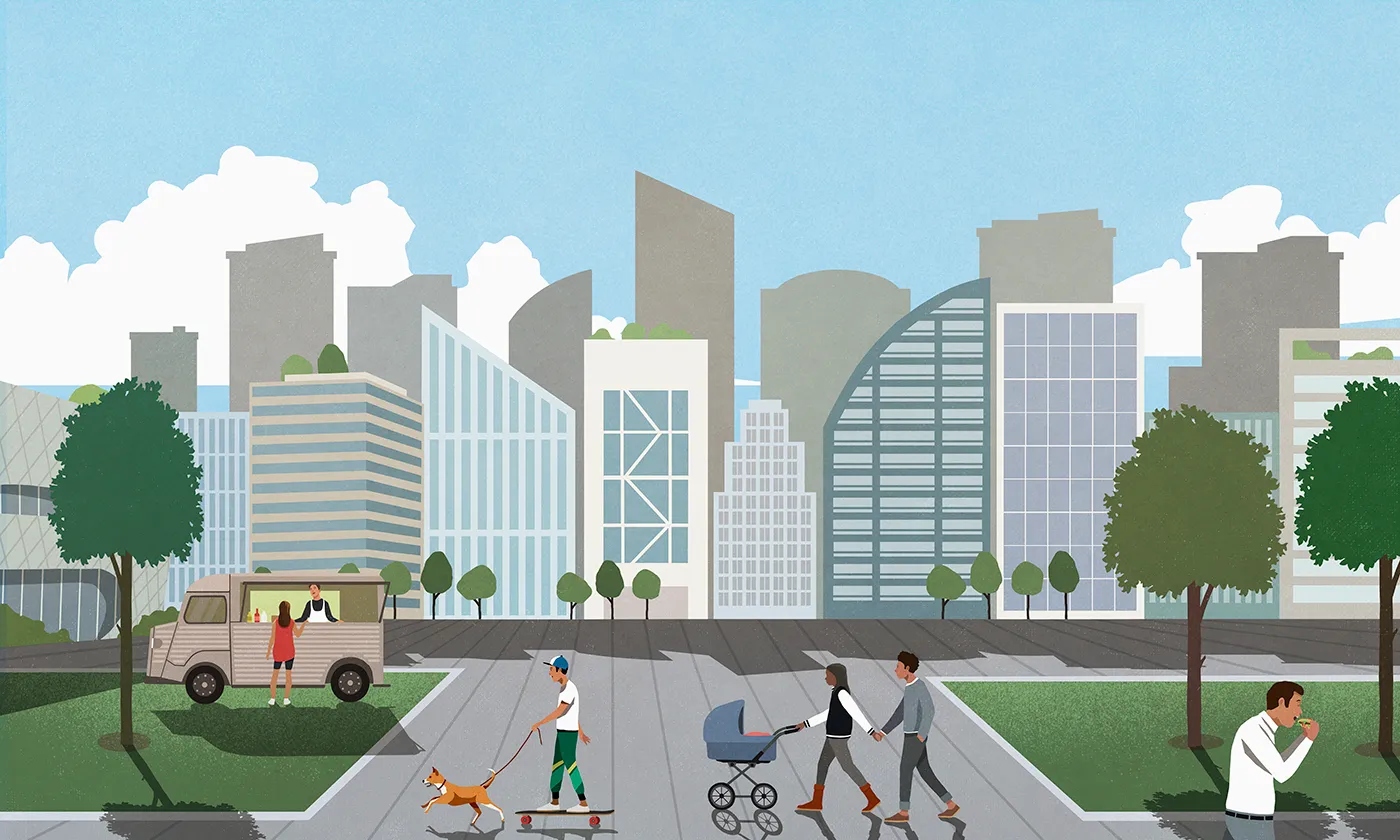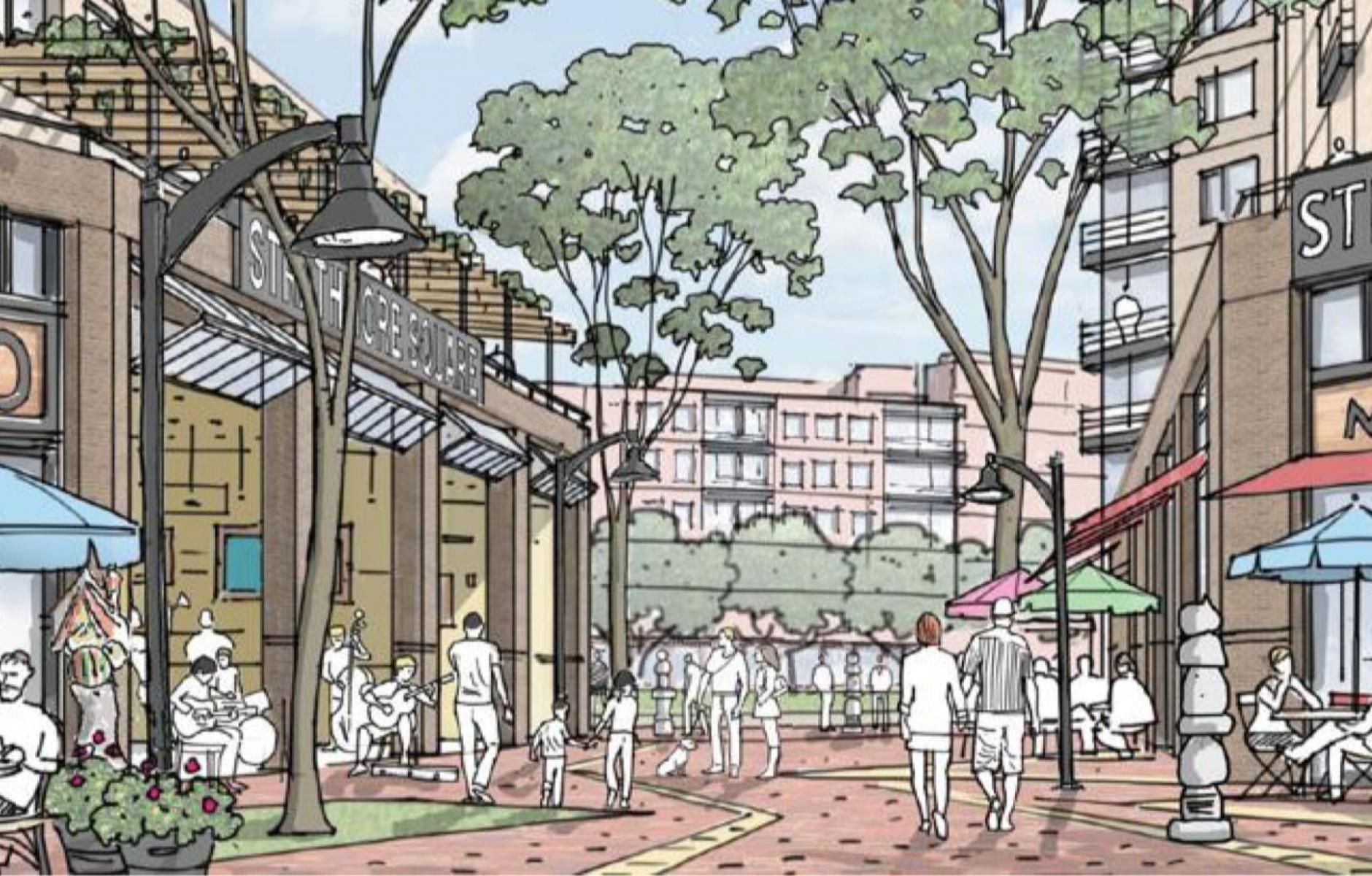New Urbanism Starts Walkability - Building Vibrant Communities
New Urbanism is a planning and design movement that advocates for the creation of vibrant, sustainable, and pedestrian-friendly communities. At the heart of this movement is the concept of walkability, which emphasizes the importance of designing neighborhoods and cities that are accessible and inviting for pedestrians. In this article, we will explore the principles and benefits of New Urbanism, with a specific focus on how new urbanism starts walkability and transforms the urban landscape.
Author:George EvansJun 01, 202366.4K Shares1.1M Views

New Urbanism is a planning and design movement that advocates for the creation of vibrant, sustainable, and pedestrian-friendly communities. At the heart of this movement is the concept of walkability, which emphasizes the importance of designing neighborhoods and cities that are accessible and inviting for pedestrians. In this article, we will explore the principles and benefits of New Urbanism, with a specific focus on how new urbanism starts walkabilityand transforms the urban landscape.
Principles Of New Urbanism
New Urbanism is guided by a set of principles that aim to create human-scaled and inclusive communities. These principles prioritize the needs and well-being of residents, promote sustainable development, and foster a sense of place. Some key principles of New Urbanism include:
- Walkability - The core principle of New Urbanism is creating neighborhoods and cities that are easily navigable by foot. New urbanism starts walkability and promotes it. Walkability is achieved through the design of interconnected streets, mixed-use developments, and proximity to amenities.
- Mixed-use and Diversity - New Urbanism promotes the integration of residential, commercial, and recreational spaces within a neighborhood. This encourages a diversity of land uses, reduces the need for long commutes, and creates opportunities for social interaction.
- Connectivity -New Urbanism emphasizes the importance of creating a connected street network, with a variety of transportation options, such as sidewalks, bike lanes, and public transit. This connectivity enhances accessibility and reduces reliance on private automobiles.
- Density - New Urbanism advocates for higher-density development that maximizes land use efficiency and promotes a sense of community. Higher density allows for a greater concentration of amenities, encourages social interaction, and supports a vibrant street life.
- Sustainability -New Urbanism promotes sustainable development practices, including the preservation of green spaces, energy efficiency, and the use of renewable resources. By reducing automobile dependency and encouraging walking, biking, and public transit, New Urbanism aims to reduce carbon emissions and promote environmental stewardship.
Benefits Of Walkability
Walkability, a key component of New Urbanism, offers numerous benefits to individuals and communities alike. Here are some of the key advantages:
- Health and Well-being -Walkable communities encourage physical activity, leading to improved health outcomes for residents. Regular walking can help reduce the risk of chronic diseases, promote cardiovascular health, and improve mental well-being. Accessible sidewalks, parks, and pedestrian-friendly infrastructure make it easier for individuals to incorporate physical activity into their daily lives.
- Reduced Traffic Congestion - Walkable communities reduce the reliance on private automobiles, leading to less traffic congestion and improved traffic flow. By encouraging walking as a mode of transportation, New Urbanism reduces the number of short car trips, resulting in fewer vehicles on the road and reduced pollution.
- Economic Vitality -Walkable neighborhoods and commercial districts create opportunities for local businesses to thrive. Pedestrian-friendly streets attract foot traffic, leading to increased visibility and customer engagement. The mix of residential and commercial spaces encourages spending within the community, supporting local economies and fostering economic vitality.
- Social Interaction and Community Building - Walkable neighborhoods promote social interaction and community cohesion. By creating inviting public spaces, parks, and pedestrian-friendly streetscapes, residents are more likely to engage with their surroundings and interact with neighbors. This sense of community strengthens social ties, enhances safety, and fosters a greater sense of belonging.
- Environmental Sustainability -Walkability is inherently linked to environmental sustainability. By reducing automobile dependency, walkable communities contribute to lower carbon emissions, improved air quality, and reduced energy consumption. Additionally, the preservation of green spaces within walkable neighborhoods promotes biodiversity and contributes to the overall ecological health of the area.
Implementing Walkability And New Urbanism
Walkability and New Urbanism go hand in hand when it comes to transforming cities into vibrant, sustainable, and people-centric environments. By prioritizing walkability, communities can create inviting and pedestrian-friendly spaces that enhance quality of life, promote health and well-being, reduce traffic congestion, and foster social interaction.
In this section, we will delve into the strategies and considerations involved in implementing walkability and New Urbanism to create livable and thriving communities.
Mixed-Use Development
A key aspect of implementing walkability and New Urbanism is the concept of mixed-use development. This approach involves integrating a mix of residential, commercial, and recreational spaces within a neighborhood or district.
By bringing together different land uses, residents have convenient access to amenities, services, and employment opportunities, reducing the need for long commutes and encouraging a more walkable lifestyle. Mixed-use developments create vibrant and dynamic environments that promote interaction and a sense of community.
Pedestrian-Oriented Infrastructure
To foster walkability, it is essential to design pedestrian-oriented infrastructure that prioritizes the safety and convenience of pedestrians. This includes well-maintained sidewalks, clearly marked crosswalks, accessible ramps, and adequate lighting.
Designing streets with narrower lanes and traffic calming measures can help create a more pedestrian-friendly environment, encouraging drivers to slow down and be more aware of pedestrians. Additionally, dedicated bike lanes and bicycle parking facilities should be incorporated to support active transportation options.
Compact And Connected Street Networks
Creating a compact and connected street network is a fundamental element of walkability and New Urbanism. Traditional grid-like patterns with shorter blocks and interconnected streets allow for more direct routes and multiple transportation options.
This design promotes accessibility and reduces the distance between destinations, making it more convenient and appealing for people to walk. By minimizing cul-de-sacs and dead-end streets, communities can ensure that residents have easy access to a variety of services, amenities, and public spaces.
Public Spaces And Placemaking
Integrating well-designed and inviting public spaces is crucial for fostering walkability and creating a sense of place within communities. Parks, plazas, squares, and green spaces provide opportunities for recreation, social interaction, and relaxation.
These areas can act as gathering points, where residents can meet, engage in activities, and build a sense of community. Public spaces should be designed to accommodate a variety of user groups, including pedestrians, cyclists, children, and individuals with disabilities.
Community Engagement And Collaboration
Successful implementation of walkability and New Urbanism relies on community engagement and collaboration. It is vital to involve residents, businesses, and other stakeholders in the planning and decision-making process.
By soliciting feedback, conducting workshops, and hosting community meetings, planners can gain valuable insights and ensure that the design and development align with the needs and aspirations of the community. Engaged communities are more likely to embrace and support walkability initiatives, leading to greater long-term success.
Transportation Options And Accessibility
In addition to promoting walking, implementing walkability and New Urbanism requires the integration of various transportation options to cater to diverse needs. Accessible public transit, such as buses, trams, or light rail systems, should be incorporated to provide convenient and sustainable alternatives to private automobiles.
Prioritizing pedestrian access to transit stops and providing secure bicycle storage facilities at transit hubs encourages multimodal transportation and enhances overall accessibility.
People Also Ask
What Are The Key Principles Of New Urbanism?
The key principles of New Urbanism include walkability, mixed-use and diversity, connectivity, density, and sustainability. These principles guide the planning and design of communities to create vibrant and inclusive environments.
What Are The Benefits Of Walkable Communities?
Walkable communities offer numerous benefits, including improved health and well-being, reduced traffic congestion, economic vitality, enhanced social interaction and community building, and environmental sustainability.
How Can Walkability Be Achieved In Urban Planning?
Walkability can be achieved through various strategies, such as implementing mixed-use development, creating pedestrian-oriented infrastructure, designing compact and connected street networks, incorporating green spaces and public realms, and engaging in community collaboration.
How Does Walkability Contribute To Environmental Sustainability?
Walkability reduces reliance on private automobiles, leading to lower carbon emissions, improved air quality, and reduced energy consumption. By encouraging walking and reducing the need for driving, walkable communities promote environmental sustainability.
What Role Does Community Engagement Play In Creating Walkable Neighborhoods?
Community engagement is crucial in the development of walkable neighborhoods. Involving residents in the decision-making process and incorporating their feedback helps ensure that the design and development align with their needs and desires, resulting in more successful and inclusive communities.
Conclusion
New Urbanism and walkability go hand in hand, with walkable communities at the core of the New Urbanism movement. By prioritizing pedestrian-friendly design, mixed land uses, and connectivity, new urbanism starts walkability and aims to transform cities into vibrant, sustainable, and people-centric environments.
The benefits of walkability are far-reaching, including improved health, reduced traffic congestion, economic vitality, and strengthened social connections. Through thoughtful planning, collaboration, and community engagement, cities can embrace the principles of New Urbanism and create walkable communities that enhance quality of life for residents and contribute to a more sustainable future.

George Evans
Author
George Anderson, an exceptional architectural designer, envisions and brings to life structures that transcend the realm of imagination. With an unwavering passion for design and an innate eye for detail, George seamlessly blends form and function, creating immersive spaces that inspire awe.
Driven by a deep appreciation for the interplay of space, light, and materials, George's innovative approach redefines the possibilities of architectural design. His visionary compositions leave an indelible mark, evoking a sense of wonder and transforming the built environment.
George Anderson's transformative designs and unwavering dedication continue to shape the architectural landscape, pushing the boundaries of what is possible and inspiring generations to come.
Latest Articles
Popular Articles
